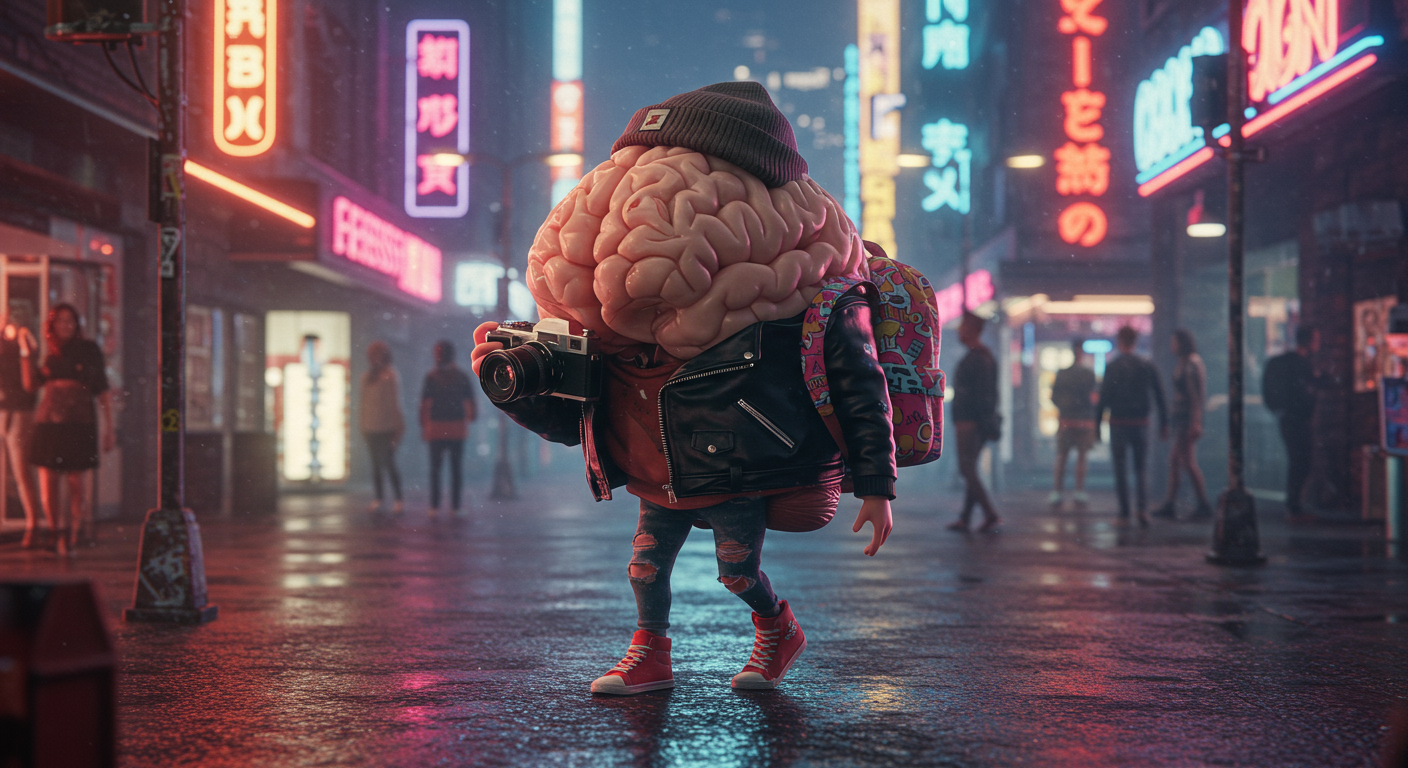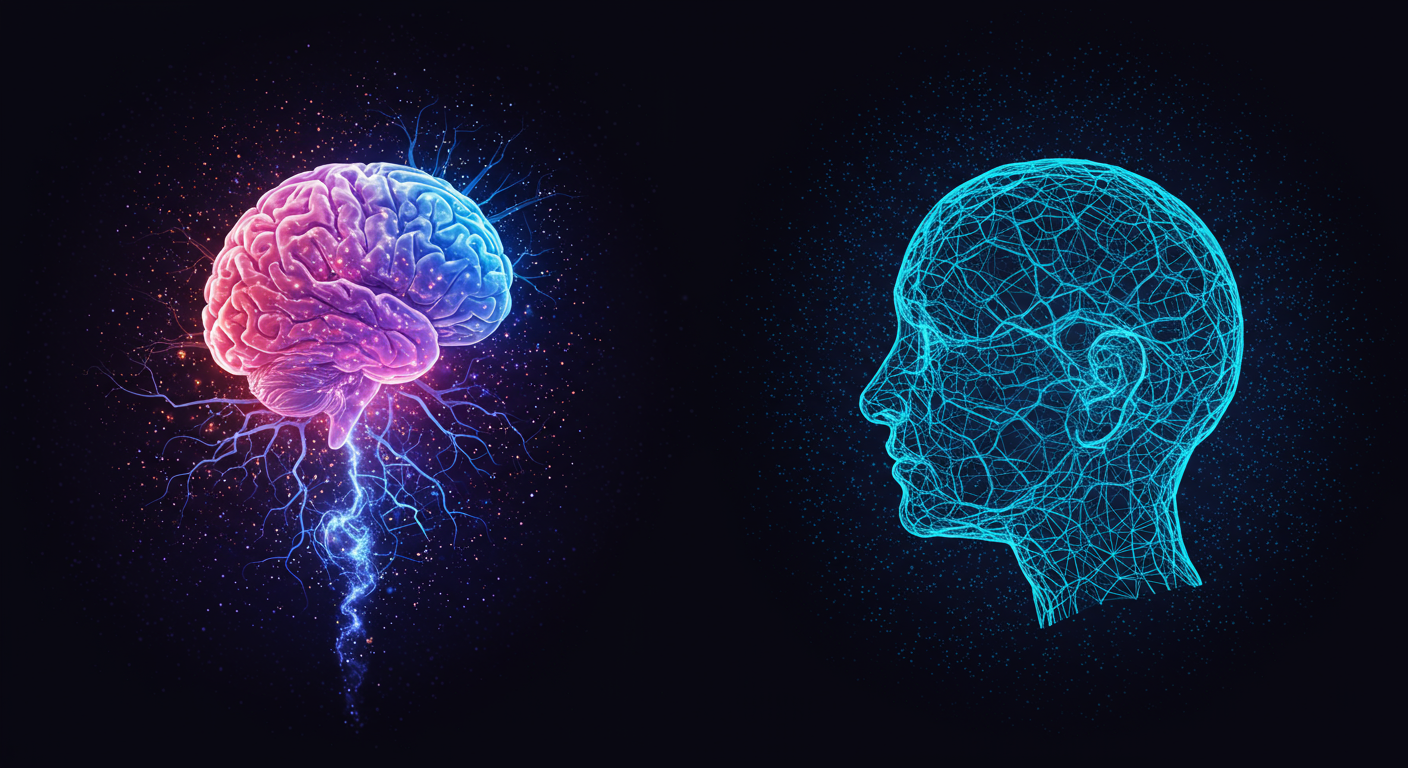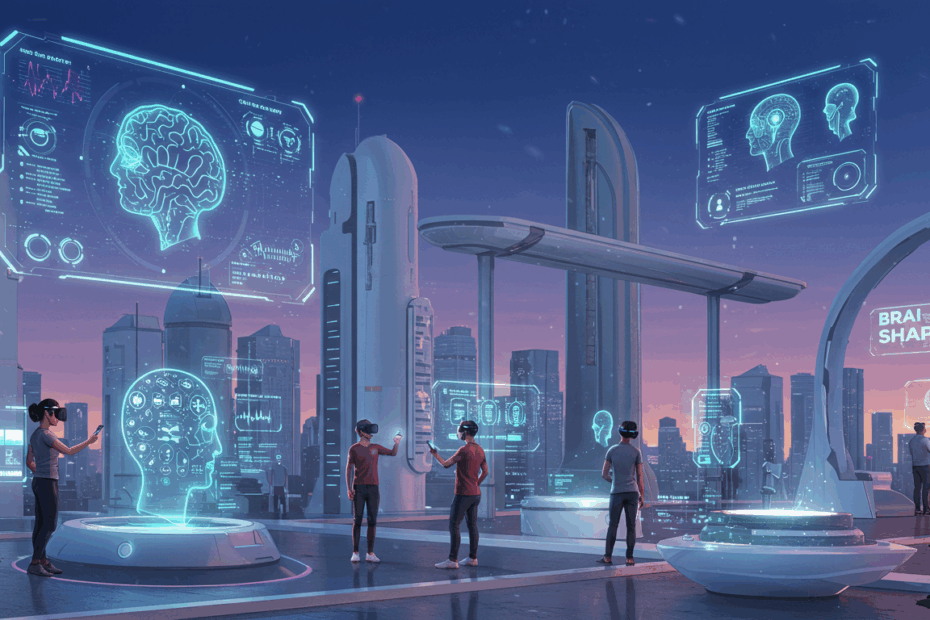John: In our line of work, Lila, we see trends come and go. Biohacking, digital detoxes, mindfulness apps—they all promise to optimize our lives. But lately, I’ve been tracking the emergence of something more foundational, a lifestyle philosophy I’ve started calling “Brain, Shape.” It’s not about a single app or a quick fix. It’s a paradigm shift in how we view personal development, grounded in a simple but profound truth from modern neuroscience: the brain you have is not static. You have a say in its future.
Lila: That’s a bold statement, John. “Brain, Shape.” It sounds catchy, but also a little intimidating. When you say we can ‘shape’ our brain, what do you actually mean? I think for most people, the brain is this mysterious black box. We know it’s important, but the idea that we can be its architect seems like science fiction. Are we talking about more than just doing Sudoku puzzles to stay sharp?
John: Much more. It’s about moving beyond simple “brain training” and adopting a holistic lifestyle that acknowledges the very real, physical impact our choices have on our neural architecture. Think of it this way: for a long time, we’ve focused on shaping our bodies through diet and exercise. “Brain, Shape” applies that same intentionality to our minds. The core principle is neuroplasticity—the understanding that our brain is malleable. As a source from Calm.com aptly puts it, “The brain is constantly shaped by experience.” While its development is largely considered complete by age 25, the shaping never truly stops.
Lila: Okay, neuroplasticity. I’ve heard that term. But isn’t there a limit? For example, psychologist Lisa Feldman Barrett notes that the “big, general shape and structure of your brain—like what areas exist and where they’re located—is mostly set from birth.” So, are we just tinkering around the edges? How much can we really change the fundamental hardware we’re born with?
John: That’s the perfect question, and it gets to the heart of the “Brain, Shape” philosophy. You’re right, the basic blueprint is largely determined. We all have what research from ResearchGate describes as “globular brains,” a shape that distinguishes modern humans from our ancestors like the Neandertals. That overall globular structure, with its complex regions, isn’t something you can alter. But the magic happens at the micro level. It’s not about changing the geography of your brain, but about changing the roads, the traffic patterns, and the connections within that landscape. A study from Duke University’s medical school highlights how even a small molecule can play a big role in “how young brains grow and form the connections that shape how we feel.” That’s the level we’re operating on—the trillions of connections between our brain’s billions of specialized cells.
Lila: So it’s less about changing the shape of the mountain and more about paving new paths on it. I can wrap my head around that. But to do that effectively, don’t we need a map? You mentioned “billions of specialized cells.” That’s an impossibly complex system. How can an average person even begin to understand it without a PhD in neuroscience?
John: Precisely. That brings us to the first pillar of this lifestyle: the “Brain” part. It’s about cultivating a foundational literacy of your own hardware. You don’t need to be a neuroscientist, but understanding the basics is empowering. For instance, knowing that your cerebrum is made of two cerebral hemispheres, as outlined by Wikipedia, and that these hemispheres grow in a distinct “C-shape” during development, gives you a sense of the organ’s elegant design. More importantly, research published in *Nature* highlights that humans have significant asymmetries between these hemispheres, a specialization that’s crucial for functions like language. Understanding this helps you appreciate why different activities feel different—why writing an article might engage different neural machinery than painting a picture.
Lila: I see. So knowing a bit about the ‘what’ and ‘where’ helps you understand the ‘how’. You mentioned a map before. Is anyone actually trying to create one?
John: Yes, and that’s one of the most exciting frontiers in science right now. The Allen Institute, for example, is involved in a massive collaborative effort aimed at “creating a first-of-its-kind brain atlas.” Their goal is to map the brain’s cellular and molecular architecture in unprecedented detail. For the “Brain, Shape” practitioner, this work is monumental. While we won’t be reading these atlases ourselves, the insights they provide will trickle down, helping us understand which lifestyle interventions are most effective. It’s about replacing guesswork with data-driven self-care. It helps us understand the very definition of the brain, which, as Britannica states, is the mass of nerve tissue that “integrates sensory information and directs motor responses.” The better the map, the better we can understand that integration process.

Lila: Okay, that makes sense. Having a better map helps us navigate. So if that’s the “Brain” pillar—understanding the hardware—what does the “Shape” pillar look like in practice? Is this where we get to the Sudoku puzzles?
John: This is where it becomes a tangible lifestyle. The “Shape” pillar is the active, intentional process of sculpting your neural pathways through your daily actions, environment, and inputs. It’s about recognizing that everything you do is, in a small way, a vote for the kind of brain you want to have tomorrow. For instance, a blog from UCSF Radiology discusses a study on how different activities, like reading versus watching TV, “shape the growing brain.” Reading actively builds language and visual association pathways in a way that passively consuming video does not. This isn’t a moral judgment on TV, but a factual observation about its different neurological impact.
Lila: But John, with all due respect, my parents told me to read more and watch less TV. Is “Brain, Shape” just putting a new, scientific-sounding label on old-fashioned common sense?
John: It’s a fair challenge. The difference is the depth of understanding and the intentionality behind it. The old advice was a ‘black box’ prescription: “do this, it’s good for you.” The “Brain, Shape” approach is about understanding *why* it’s good for you, on a neural level. It’s about knowing that your brain’s dynamics are actively “shaping the cognitive functions,” as a 2025 article in *ScienceDirect* explains. The neural activity operating in the background is what determines the foreground of your thoughts and abilities. It’s not just about what you do, but how it influences this dynamic. For example, another study from News-Medical.net suggests that even our “developmental visual experience may shape brain architecture,” meaning the very quality of our sensory input matters. It’s a much more granular and empowered perspective than just “eat your broccoli.”
Lila: Granular is the right word. So it’s about the quality of our experiences, not just the category. That feels more actionable. You mentioned earlier that connections in the brain shape how we feel. How does that fit into the “Shape” pillar?
John: It’s absolutely central. The “Shape” pillar isn’t just about cognitive skills like memory or focus; it’s profoundly connected to emotional regulation. The Duke University research I mentioned found a neuro-immune link, specifically a molecule called IL34, that plays a role in forming the connections that shape our feelings. This means that factors influencing our immune system, like stress, diet, and sleep, have a direct line to the emotional architecture of our brains. So, when you choose to go for a walk to clear your head after a stressful meeting, you’re not just calming down in the moment. You’re actively engaging in a process that, over time, can help build a more resilient emotional brain. You are, quite literally, shaping how you feel.
Lila: That’s powerful. It reframes self-care from an indulgence to a necessary act of neural maintenance. So, let’s get even more practical. If someone wants to start living the “Brain, Shape” lifestyle today, what are some specific techniques they can use? Where do they begin?
John: An excellent starting point is to focus on how you manage information and experiences. A fascinating study from UCLA identified a tiny region in the brain that works like “a reset button.” Its function is to separate one meaningful event from the next, which is crucial for forming distinct, strong memories. In our modern world of constant notifications and endless scrolling, we rarely give our brains a chance to hit that reset button. A “Brain, Shape” technique would be to practice “experience segmentation.” After finishing an important task, take a few minutes of genuine pause—no phone, no new input—to let your brain file that experience away properly before moving on to the next. It’s a simple act that respects the brain’s natural memory-forming process.

Lila: A cognitive “reset button”—I love that. It feels like a direct intervention. What else? Are there other tools we can use to be more intentional about this shaping process?
John: Another is to think about “cognitive nutrition.” We scrutinize the food we eat, but we’re often careless about the information we consume. This isn’t about avoiding certain topics, but about varying your cognitive diet. Engage in activities that challenge different parts of your brain. As we know from the work on brain asymmetry, different tasks call upon different neural networks, often specialized in one hemisphere or the other. If your job is highly analytical and language-based (a left-hemisphere-dominant task for many), make time for spatial or creative activities, like drawing, dancing, or even just navigating a new part of town without GPS. This cross-training ensures you’re building a rich and diverse network of neural pathways, not just reinforcing the same few over and over.
Lila: So it’s about building a well-rounded brain, just like a well-rounded physique. That makes a lot of sense. But what about the things we can’t control? I’m thinking about genetics. Don’t our genes play a huge role in the brain we end up with? How does that factor in?
John: It’s a critical piece of the puzzle, and ignoring it would be naive. Our genetic blueprint provides the starting point. A groundbreaking study published in the journal *Cell* in July 2025 managed to identify “two genes linked to human brain features.” The researchers are clear that this is just the beginning of creating a “road map” to discover more, but it confirms that our DNA has a direct say in our brain’s structure. Furthermore, other research from Science Alert has even linked certain brain abnormalities in modern humans to DNA inherited from Neanderthals. So yes, genetics are undeniably a powerful force.
Lila: That sounds a bit deterministic, doesn’t it? If my genes predispose me to a certain brain structure or even an abnormality, it feels like the “Shape” part of the equation gets a lot weaker. It could make people feel helpless, like their fate is already written in their DNA.
John: I understand that concern, but the “Brain, Shape” perspective sees genetics not as a destiny, but as a landscape. Your genes might define the terrain—whether you have mountains to climb or valleys to navigate—but your lifestyle choices determine the paths you build and the journey you take. The science of epigenetics has shown us that our experiences and environment can influence which genes are turned on or off. So, knowing your genetic predispositions isn’t a sentence; it’s valuable information. It’s like knowing you have a genetic risk for high cholesterol. You don’t throw your hands up in defeat; you become more diligent about diet and exercise. Similarly, understanding your neural predispositions allows for more targeted and effective “shaping.”
Lila: So, knowledge is power. Instead of being a source of anxiety, our genetic makeup can be a personalized guide for our lifestyle choices. It’s about working *with* our biology, not against it. That’s a much more optimistic way to look at it.
John: Exactly. Optimistic, but also realistic. The “Brain, Shape” lifestyle is about embracing the full complexity of who we are—a dynamic interplay of nature and nurture. It acknowledges the hardware we’re given and celebrates our power to be active participants in its lifelong development. The goal isn’t to achieve some mythical state of “brain perfection.” It’s about continuous, informed improvement. It’s about leveraging this incredible science—from discovering the structure of key receptors, as OHSU researchers did, to mapping progenitor metabolism, as described in PubMed—to live healthier, more engaged, and more fulfilling lives.

Lila: It strikes me that this philosophy is especially relevant now. We’re living in an age of information overload and constant distraction, which feels like an unintentional, and probably not very healthy, “shaping” of our brains. This feels like a way to take back control, to be conscious and deliberate about our own cognitive and emotional development.
John: You’ve hit the nail on the head. “Brain, Shape” is an antidote to the passive consumption model of modern life. It’s a call to action. It asks us to be the curators of our own minds. Whether it’s by mindfully using a cognitive “reset button,” diversifying our “cognitive nutrition,” or simply understanding that a walk in the park is a neuro-architectural activity, it empowers us. The science is clear: the brain we have at 40 is a reflection of the choices we made at 20 and 30. The brain is constantly being built, and we are the lead contractors.
Lila: I think what I find most appealing about this is that it’s not a product you can buy. It’s a practice you can adopt. It’s accessible to everyone, regardless of their resources. It’s a message of agency. It says that the most powerful tool for changing your life is already inside your head, and you just need to learn how to use it. It’s a hopeful vision for the future of personal well-being.
John: Well said, Lila. It is fundamentally a message of hope. A hope grounded not in wishful thinking, but in the remarkable, verifiable science of our own brains. It’s the ultimate frontier of self-exploration, and the journey is one of continuous discovery. The simple, elegant truth is this: your life shapes your brain, so shaping your brain can, in turn, shape your life.
